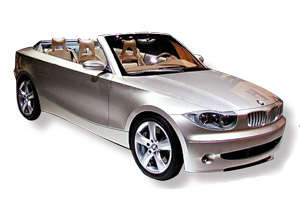Political System
Germany is governed according to the «Basic Law» (Grundgesetz) or Constitution, which came into effect in 1949. Under this law, Germany’s Head of State is the President, elected by the Federal Assembly (Bundesversammlung), a convention formed by the members of the Bundestag (Federal Diet or the Lower House of Parliament) and an equal number of representatives chosen by the regional parliaments, both for a period of 5 years. The President names the Chancellor (Bundeskanzler), who is the head of the Executive branch and must be elected by an absolute majority of the Bundestag.
The German parliament is bicameral. It is made up of the Bundestag which has 655 deputies, and the Bundesrat or Federal Council which has 69 delegates from the Länder or states. Members of the Bundestag are elected for four years; half elected directly in single member districts and the rest according to a system of proportional representation or elected as delegates by the governments of the states that form the Bundesrat.
The latter are also elected for a four-year period by universal suffrage in a complex electoral system that combines direct and representative election.
The Judicial branch consists of the Federal Constitutional Court or Bundesverfassungsgericht and six other important national courts (the Federal Court of Justice, the Federal Administrative Court, the Federal Labour Court, the Federal Social Court and the Federal Patents Court).
Caucasian roots
Two Caucasian sub-groups predominate among the German population. The Alpine group is the largest and is based in the central and southern regions; the Teutonic or old Germanic group inhabits the northern part.
Germany is one of the most urbanised countries in Europe, with 88% of the population living in towns of two thousand inhabitants or more.
The population density in the former East Germany remains lower than that in the former West Germany
A varied geography
Germany is bounded to the north by the North Sea, Denmark and the Baltic Sea; to the east by Poland and the Czech Republic; to the south by Austria and Switzerland; and to the west by France, Luxembourg, Belgium and the Netherlands (Holland).
Its territory is divided into 3 main regions:
– The lowland plains in the north, which encompass a variety of landscapes, including different river plain valleys and a vast expanse of forested land. The far eastern tip of the plain has fertile soil suitable for agriculture.
– An area of plateaus in the centre bounded approximately by the city of Hanover in the north and the Main River in the south, encompassing mountains, river plain valleys, rivers and well-defined basins.
– A mountainous region in the south, taking in the Eifel ranges and the region of Hunsrück to the west; the Taunus mountains and the region of Spessart in the centre and the Fichtel Mountain range to the east. In the far south are the Bavarian Alps, which include Germany’s highest mountain, Zugspitze at 2,962 metres above sea level.
World Heritage
The city of Ratisbon, in east Bavaria, was named a World Heritage Site by UNESCO in 2005. Located on the edge of the River Danube, it was founded in the year 179 A.D by Emperor Marcus Aurelius as a base for a regiment of six thousand soldiers. Today it is considered Germany’s medieval treasure. The old part of the city is almost intact and still has many examples of perfectly preserved Roman and Gothic architecture.
A leading exporter
Due to positive overall economic performance, Germany ranks third among the leading industrialised countries and is the second largest exporter after the United States, supported by an excellent infrastructure and a highly skilled workforce. Cutting-edge research is another strength of the German economy. Most of Germany’s trading partners are industrialised countries and countries linked to the European Union. Almost 72% of Germany’s exports stay in Europe. Industrial activity is the foundation of the German economy, and the country’s nearly 50 thousand companies employ almost seven million people. More than 90% of all industries are small or medium sized businesses with 500 workers or less, and account for 33% of industrial production. The Germans are world leaders in chemicals and rank third in automobile, machinery and equipment manufacture. Mining plays a comparatively small role in the economy. Nonetheless, a number of minerals are produced in significant quantities. Germany is the largest producer of lignite in the world, and also produces bitumen coal, crude petroleum, iron, potassium, salt and natural gas.








 Muere Evita
Muere Evita